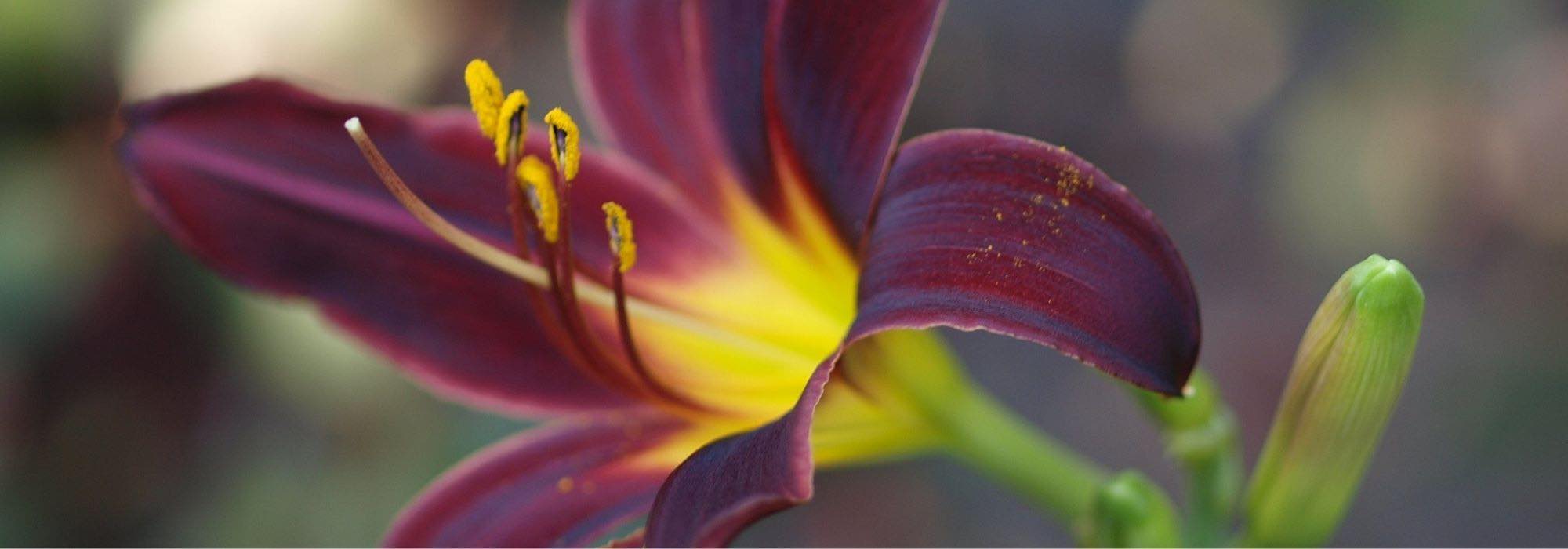
Choosing a daylily
Our buying guide
Contents
Daylily or hemerocallis is a reliable and generous perennial, easy to maintain provided it receives at least 5 hours of daily sunlight. Its uniqueness, expressed by its name “Day Lily” or “Daisylily” in English, is that its flower blooms and fades on the same day, renewing itself each day.
It offers opulent foliage and a variety of shapes and colours in summer, allowing it to fit into many garden styles. Discover how to choose the one that meets your desires among the many existing varieties.
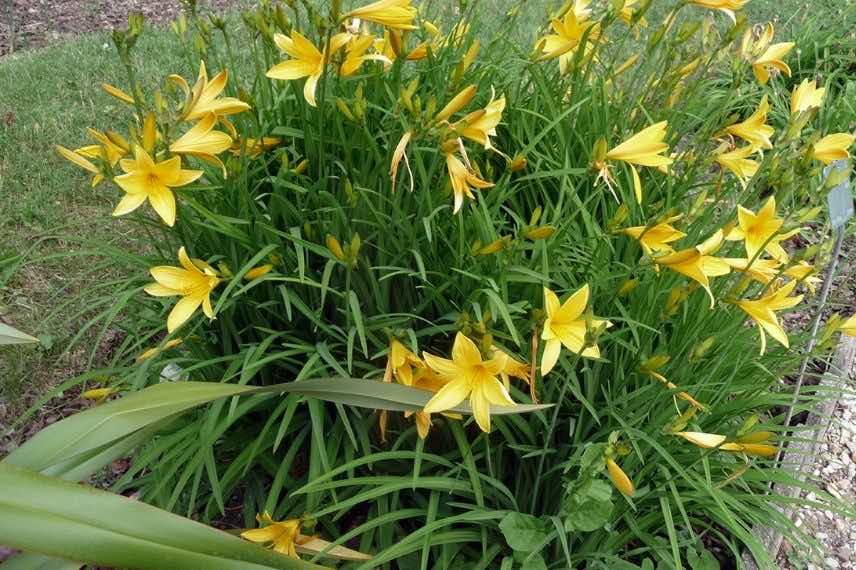
The generous flowering of the daylily
Why choosing a daylily?
The surprise of flowers renewing each day is a wonderful reason to choose to plant daylilies in your garden. Furthermore, if you love bright flowers and warm tones, the daylily is the flower par excellence for shades of orange, yellow, tawny, red, and purple. If you love blue in the garden, you won’t find it among daylilies; however, there are some lovely purple versions, as well as varieties in soft colours for a serene atmosphere.

The Daylily, specialist in warm tones
Choose by flower colour
The stars of bold colours are undoubtedly the daylilies, which will enchant your gaze with their warm tones: yellow, orange, red, brown, and purple. They also come in softer, more romantic colours such as white, violet, lavender, pink, and salmon.
Orange Daylily
The daylily offers a beautiful range of orange or yellow and yellow/orange tones: the iconic fulva or tawny daylily with its distinguished reddish flowers, or its double version fulva ‘Flore Pleno’ with its stunning recurved petals. The dynamic ‘Frans Hals’ with its bicoloured red and yellow flowers, or the luminous ‘Patricia Jojo’ with its velvety yellow.
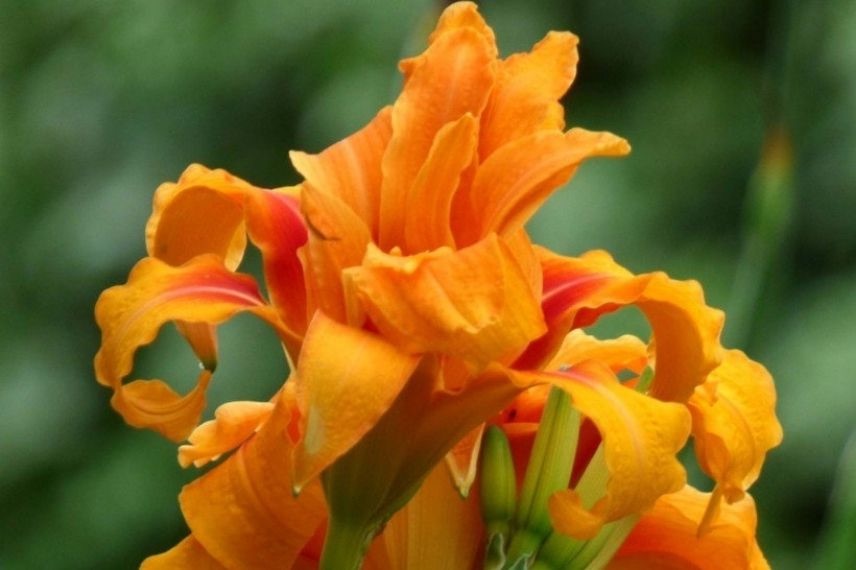
Very pretty Hemerocallis fulva ‘Flore Pleno’
Blue Daylily
There are no blue daylilies; however, there are some very lovely flowers in shades of violet, lavender, or lilac: the striking ‘Destined To See’ with cream and violet eye and green throat, the original ‘Mildred Mitchell’ in lavender with a wide bluish halo, or the ‘Indian Giver’ with its lavender and violet gradient.
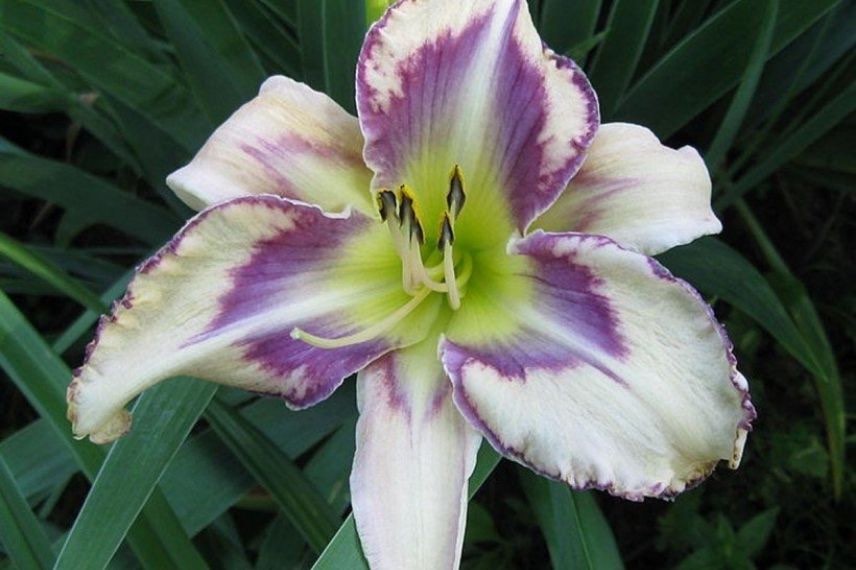
The lovely character of ‘Destined To See’
White Daylily
White daylilies have a throat that varies from yellow to green and petals that are sometimes ivory and sometimes cream: the chic ‘Gentle Shepherd’ with its large ivory flowers, and the sweet ‘White Temptation’, closer to pure white.

‘Gentle Shepherd’, elegant
Pink Daylily
There are many shades of pink among daylilies: for example, the chic ‘Chicago Knobby’ with its fringed purplish petals, the distinguished ‘Neyron Rose’ with raspberry and white petals, and the tangy ‘Final Touch’ with alternating pink and lavender colours and a green heart.
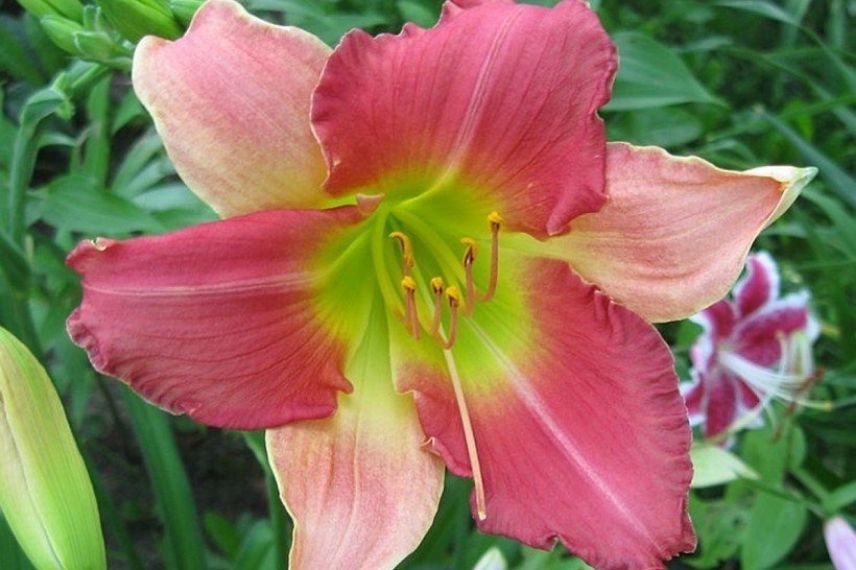
Original ‘Final Touch’
Red Daylily
The reds of daylilies are warm and often dark: the daylily ‘Black Stockings’ with its dark black-purple dress, the ‘American Revolution’ with its elegant burgundy corolla and yellow-green throat, or ‘Pardon Me’ with its dark velvety raspberry red.

‘Black Stockings’, a very dark and striking dress
Apricot Daylily
Some varieties of daylilies create beautiful combinations in a romantic garden; we have reviewed those in violet, white, and pink, but also consider apricot shades like ‘Alaqua’ with its beige-rosé petals edged in burgundy like its heart, or the sweet ‘Mini Pearl’ with its apricot tones and yellow throat.

Sweet and beautifully edged, ‘Alaqua’
Discover other Hemerocallis - Daylilies
View all →Available in 3 sizes
Available in 1 sizes
Available in 3 sizes
Available in 1 sizes
Available in 2 sizes
Available in 2 sizes
Available in 3 sizes
Available in 2 sizes
Available in 1 sizes
Available in 2 sizes
Choosing according to the use
Even though most daylilies are quite tall, ranging from 60 cm to 1 m in height and will find their place in open ground in the middle or back of a border, some varieties are better suited for edging, with heights of 30 to 50 cm. These can also be grown in pots.
For this second use, you can plant varieties that are 30 to 40 cm tall, such as the famous ‘Stella De Oro’, which is very floriferous and robust with bright yellow flowers, or its little sister ‘Mini Stella’. The daylily ‘Rosy Returns’ or the ‘Everydaylily Cerise’ in pink tones are equally remarkable.
→ Also, check out our article: 7 dwarf daylilies for edging
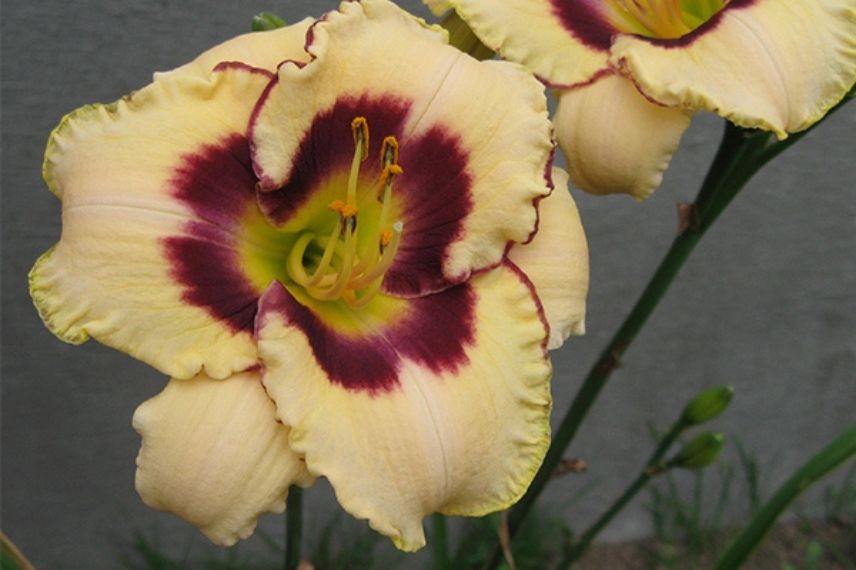
Here, ‘Canadian Border Patrol’ is well suited for borders and pots
Choosing for its fragrance
To add to the pleasure, some varieties of daylilies are fragrant. With their exceptional flowering and good hold in bouquet, how can one resist?
A famous fragrant variety is the hemerocallis citrina, lemon yellow with a lily of the valley scent; also yellow is the daylily lilioasphodelus with an orange blossom fragrance. There are also fragrant varieties in pink, such as ‘Strawberry Fields Forever’, soft pink with a heart and purple fringes, or the more discreet ‘Luxury Lace’ with lilac and cream flowers and a lovely lime green throat.
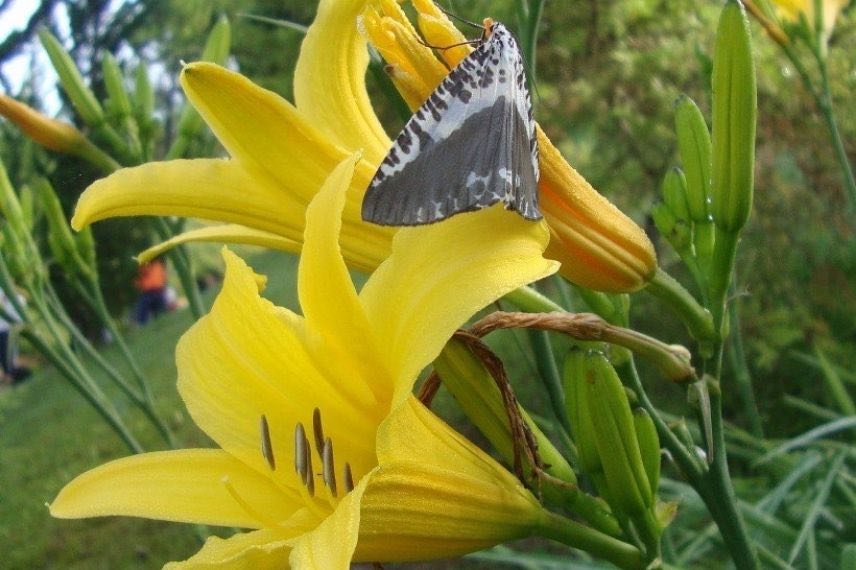
Botanical daylilies, like lilioasphodelus, are very fragrant
Choosing according to the shape of the flowers
It’s a very interesting aspect of daylilies: there are notable differences in the shape and size of the flowers, which give them distinct personalities. The size of the flowers ranges from 7 to 15 cm, with some reaching up to 25 cm.
As for the diversity of their shape, here are a few examples:
- Star-shaped, with fine leaves, the elegant ‘Crimson Pirate’ from China, with red flowers and an orange throat.
- Rounded, with plump, fringed petals, the indulgent ‘Dragons Eye’ in pink and cherry red.
- Trumpet-shaped, with a long, slender tube, the charming and subtle ‘Corky’ in golden yellow with brown-red sepals and stems.
- Spider-shaped, the distinguished ‘Margaret Perry’ in warm orange, with yellow-gold lines and throat.
- Relief with crinkled undulating petals, the delicate ‘Double Dream’ in peach colour.
- Double flowers, the dynamic ‘Apricot Beauty’ in apricot and red.
- Patterned, with its various colours, the original ‘Siloam Bo Peep’ in soft pink, with a purple eye and acid green throat.
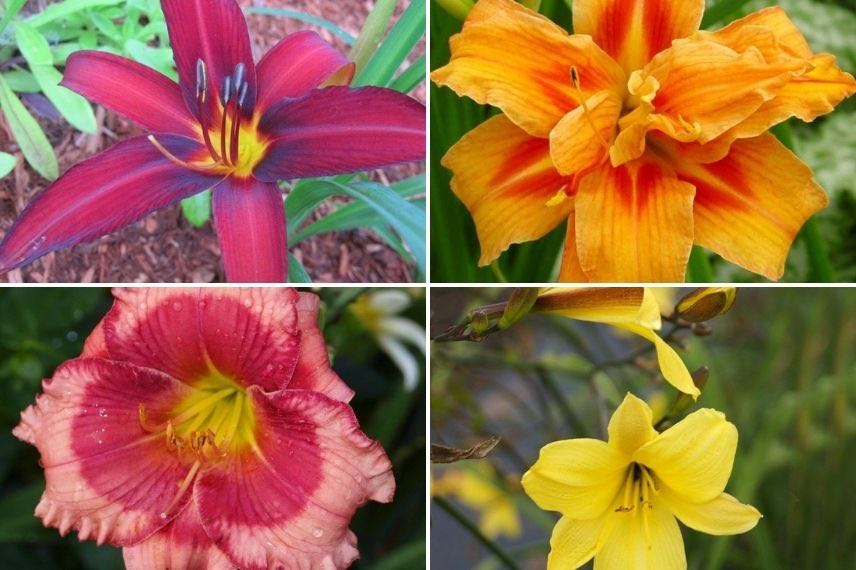
Daylilies: ‘Crimson Pirate’, ‘Apricot Beauty’, ‘Dragons Eye’, ‘Corky’
Choosing early and late varieties
Even though their season is relatively short, from June to September, by pairing them with early and late varieties, you can spread their flowering from May to October.
Some varieties offer their first flowers in May: ‘Amadeus’ with its vibrant red, ‘Lullaby Baby’ in delicate pale salmon, or the previously mentioned fulva, ‘Stella de Oro’, lilioasphodelus.
Other varieties continue to impress until October, such as the ‘Everydaylily’ series: ‘Cerise’, ‘Rose’, ‘Red Ribs’, which explore the range of pink.
And if you want to eat them!
Well established in Japanese and Chinese culinary culture, and more broadly in Asia, daylilies are among the edible flowers, highly valued for their flowers and buds in savoury dishes due to their peppery taste. Notably, we can mention the ‘Buttercup’ and the citrina with their appreciated taste qualities.
- Subscribe!
- Contents
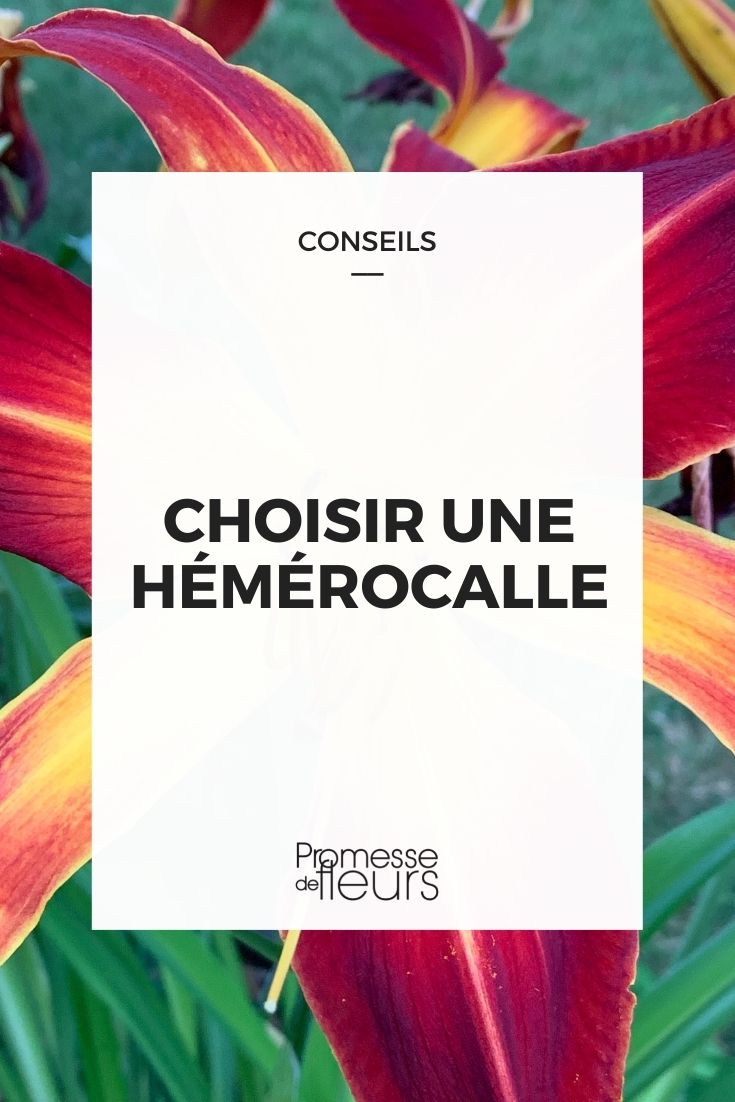































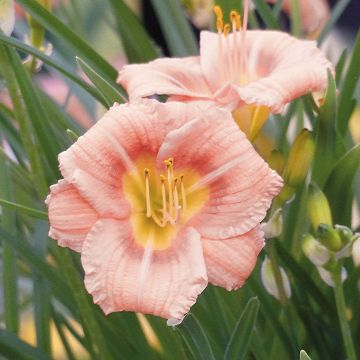



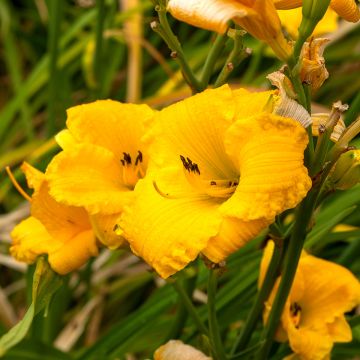

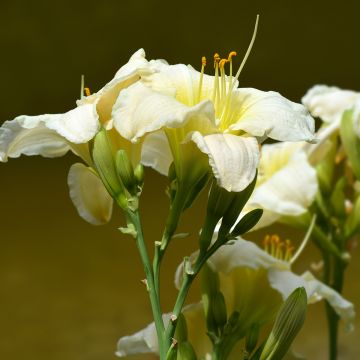

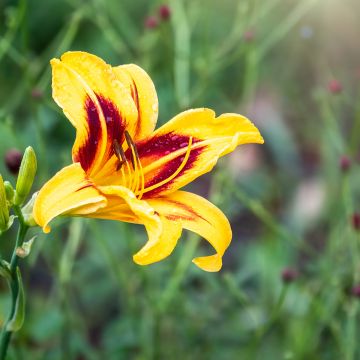
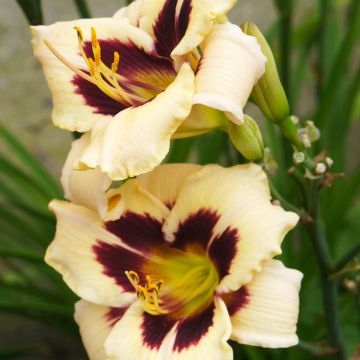
Comments